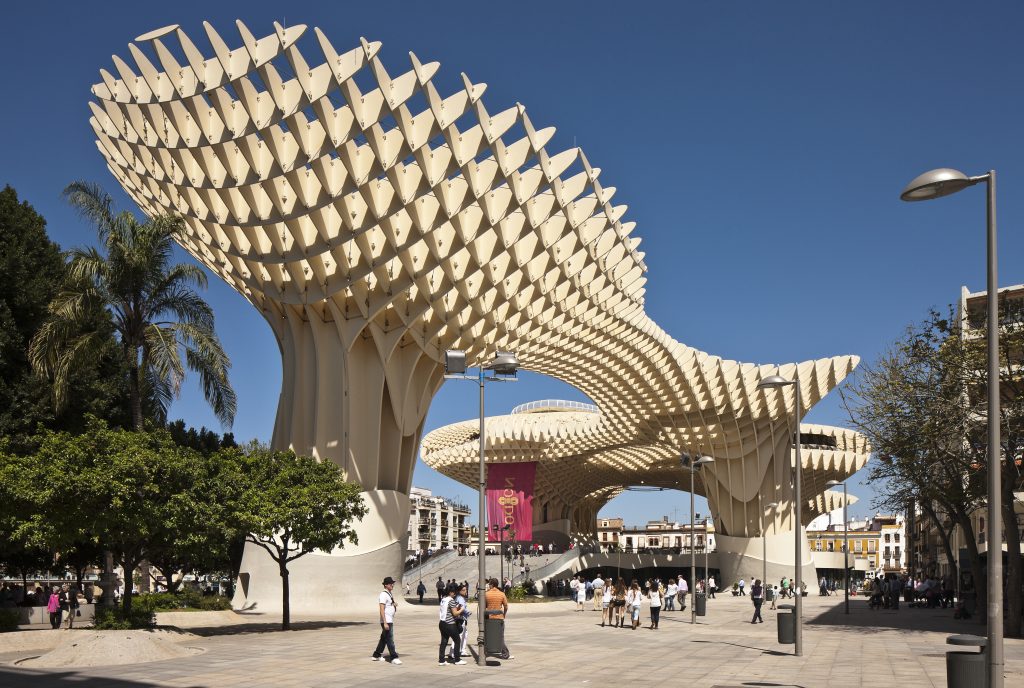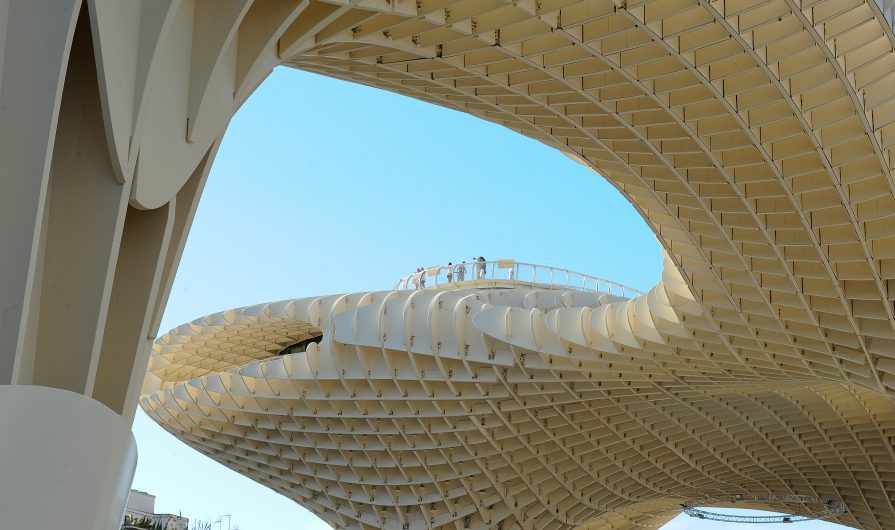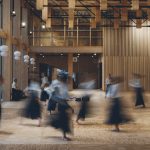




One of the world’s largest wooden structures provides much-needed shade and a gathering place for its citizens.
Encarnación Square Market was bustling with activity in early 19th-century Seville, Spain. Designed by Sevillian architect Melchor Cano, the market contained more than 400 stalls of fresh produce, providing sustenance for the whole city.
But over the decades, structural problems with some of the stalls and the inevitable rise of supermarkets left the market waning. In 1973, it was demolished; the area was fenced off, and what was once a vibrant market square became an eyesore in an otherwise charming city.
Fast-forward to 2004. That year, Seville’s city council proposed an international competition to redevelop the square, hoping to return it to its former vibrancy and splendor. German architect Jürgen Mayer won the competition, and the project—originally called Metropol Parasol—is now more lovingly known as Las Setas de Sevilla or Las Setas (the mushrooms).
In 2006, work began with the structure’s wooden deck, which measures 150 m by 70 m and stands 28.5 m tall. It uses micro-laminated Finnish pine, called kerto. This wood consists of 3-mm-thick veneers glued together, offering higher shear strength than solid wood. The timber is protected from the elements with a waterproof polyurethane coating. Incidentally, Mayer had sustainability in mind: for every pine used in the project, three more were planted in the same forests from which they were taken.
In December 2010, the newly renovated Mercado Encarnación opened, followed by the Plaza Mayor and the Antiquarium Museum (designed by Sevillian architect Felipe Palomino González) three months later. In May 2011, with the Footbridges and Viewing Platform opened, Metropol Parasol was complete.
The six large mushroom-shaped timber lattice parasols of this multi-level structure frame the square and provide some relief from the blistering temperatures. The basement includes a platform to view archeological remains in situ from the first century to the Almohad period. The 2,155-sq.m market (with almost 40 stalls, including everything from fish to fruit) has a raised square for performances and shows, and there’s also a tapas restaurant. From the Footbridges and Viewing Platform, citizens and tourists alike can take in the city sights.
Now over 20 years old, Metropol Parasol still remains a prime example of successful placemaking.
Architect
J.MAYER.H
Berlin, Germany
Structural Engineer
ARUP
Madrid, Spain
Photography
Fernando Alda
Seville, Spain
David Franck
Ostfildern, Germany
Hufton + Crow
Hertford, England
Nikkol Rot
Zürich, Switzerland






